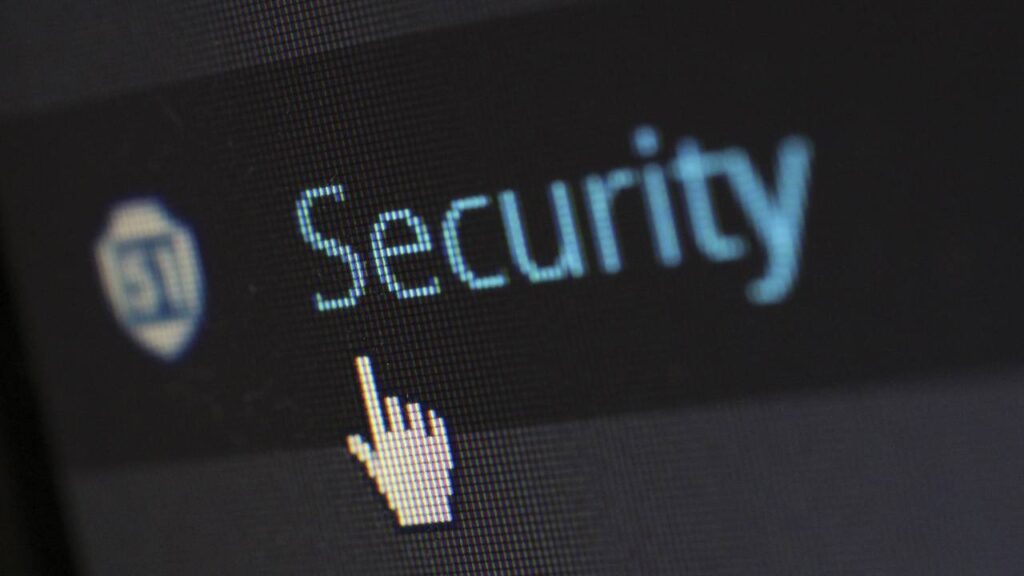There is an ever-evolving array of threats facing businesses in today’s digital landscape. This reality underscores the crucial need for a resilient security framework. By establishing a robust security strategy, you ensure that your business is capable of withstanding and recovering swiftly from cyber attacks.
A comprehensive security framework is not just about having the right technology in place. It’s equally important to instil a culture of awareness within the team. An organisation’s entire staff needs to know how to protect the business and respond effectively if a breach occurs. By sharing responsibility, external threats can be better combated.
You might think only large corporations are at risk, but any business, regardless of size, can be targeted. Prioritising security is essential to not only protect sensitive data but also to maintain trust with your clients. When you demonstrate a commitment to security, it reassures your stakeholders that you’re safeguarding their interests.
Understanding Business Resilience
Resilience in business involves a strategic approach to risk management, security, and governance. It’s all about ensuring continuity in the face of disruptions by fostering a solid security culture and implementing robust governance frameworks.
The Fundamentals of Business Resilience
Business resilience is about preparing for unexpected events, enabling organisations like yours to withstand disruptions. It involves processes that ensure continuity and minimises downtime. Central to this is risk management, which allows you to identify potential threats and mitigate them proactively.
Focusing on adaptability, resilience requires an organisational mindset that embraces change and learns from past experiences. By doing so, you can anticipate future challenges better. It’s crucial to have plans in place, covering everything from data recovery to maintaining supply chain operations. This readiness helps maintain trust with your clients and partners by demonstrating your commitment to stable operations.
Building a Resilient Security Culture
Security culture within a business significantly impacts its resilience. It involves embedding security practices into your daily operations and attitudes. Everyone in the organisation plays a role in maintaining security standards, from executives to entry-level employees. This holistic approach helps prevent breaches and enhances the firm’s ability to respond to incidents swiftly.
Providing regular training and clear communication about security protocols is essential. This ensures every employee understands their role in safeguarding assets and data. Moreover, fostering an environment where security is prioritised positively influences compliance and risk mitigation efforts. Such a culture not only protects your organisation but also boosts confidence among stakeholders, knowing that security and resilience are taken seriously.
The Role of Governance in Business Resilience
Strong governance is vital for business resilience, acting as the framework that ensures policies and risk management strategies are effective. It involves establishing clear roles and responsibilities, ensuring that decision-making processes support resilience. Governance structures should align with your organisation’s goals and adapt to changing circumstances, reflecting the dynamic nature of risks.
Through governance, you can ensure that you’re compliant with regulations, thus reducing vulnerability to legal and financial penalties. Effective governance also requires regular reviews and updates to policies, keeping them relevant and robust against new threats. This proactive approach not only fortifies security resilience but also builds trust with customers and investors by demonstrating transparency and accountability in operations.
Cybersecurity Challenges and Threat Landscape

As the digital world expands, so do the risks and vulnerabilities. Modern businesses face continuous threats that endanger their security and operational stability. Understanding these challenges and knowing how to combat them is crucial for staying secure.
Evolving Cyber Threats
Cyber threats are continually evolving, adapting to defences and creating new challenges. These threats range from simple phishing attempts to complex ransomware attacks, each with its unique tactics and objectives. Businesses must stay informed about the latest trends in cyber threats, such as advanced persistent threats and zero-day vulnerabilities. It is crucial to maintain regular updates and patches for software systems to minimise potential entry points for attackers.
Phishing remains a widespread threat, often serving as a gateway for more severe breaches. Attackers frequently use social engineering tactics to trick employees into revealing sensitive information. Raising awareness through training can significantly reduce the likelihood of these threats succeeding. By staying vigilant, you can better protect your organisation from the ever-changing landscape of cyber threats.
Significance of Cybersecurity in Protecting Critical Infrastructure
Critical infrastructure includes essential services such as power grids, transportation, and telecommunications. These sectors are highly attractive targets for cyber-attacks due to their importance to daily operations. Disruptions can have far-reaching consequences, affecting millions of people and leading to significant financial repercussions. As a business, ensuring the resiliency of your infrastructure against these attacks is paramount.
Security solutions companies emphasise the importance of robust cybersecurity measures in safeguarding critical infrastructure, often pointing out that investing in advanced security solutions helps prevent unauthorised access and ensures the continuity of essential services. By working with specialists such as MJ Flood Security, you can bolster your defences against these significant threats, maintaining the integrity and functionality of your critical systems.
Understanding Cyber-Attacks: From Phishing to Ransomware
An important part of any business owner’s guide to security technologies is the fact that the cyber-attacks can take many forms, including phishing and ransomware, each posing unique challenges. Phishing typically involves deceptive emails or messages designed to steal credentials or install malware. Strategies to counteract phishing include employee training and implementing strict email filtering.
Ransomware, on the other hand, encrypts data, holding it hostage until a ransom is paid. Protecting against ransomware requires a comprehensive approach, including regular data backups and employing robust endpoint protection. Rapid detection and response are vital in mitigating damage from these attacks. Familiarising yourself with the nature of these cyber-attacks enables you to implement effective defences, safeguarding your business from potentially devastating consequences.
Cybersecurity Framework and Best Practices
In the rapidly evolving digital world, implementing a robust cybersecurity framework is one of the best security solutions for any company. This involves structured guidelines, crafting strong policies, and fostering a culture of constant vigilance and improvement.
NIST Cybersecurity Framework Explained
The NIST Cybersecurity Framework is a voluntary guidance based on existing standards, guidelines, and practices. It focuses on five key functions: Identify, Protect, Detect, Respond, and Recover. Each function serves a distinct purpose in managing and mitigating cybersecurity risks. This framework helps you assess your current capabilities and identify opportunities for improvement.
Implementing the NIST framework in your business can boost resilience against cyber threats. By aligning it with other security and IT management practices, you create a comprehensive approach to digital safety. Your team benefits from a clear structure, helping them understand roles and responsibilities in maintaining security.
Developing Effective Cybersecurity Policies
Creating strong cybersecurity policies is essential. Begin with an assessment of your specific risks and the protection required. Establish clear policies that detail acceptable use of technology, password management, and remote access protocols. It’s vital to develop incident response strategies to handle breaches efficiently. Make sure these policies are flexible enough to adapt to new threats.
Communication plays a key role. Everyone in your organisation needs regular updates and training to stay informed. Cultivating a culture where security is a shared responsibility encourages adherence to policies. Ensure regular reviews and updates so that your policies remain current and effective in the changing digital landscape.
Regular Audits and Continuous Improvement
Conducting regular audits is essential for identifying vulnerabilities and compliance gaps. These audits provide insights into how well your policies and systems perform. They help pinpoint areas that need attention, facilitating timely improvements. External audits can offer an unbiased perspective, reinforcing internal efforts.
Continuous improvement should be a cornerstone of your cybersecurity strategy. Encourage feedback from your team to identify shortcomings and areas for enhancement. Stay informed on the latest cybersecurity trends and emerging threats. Implement changes that enhance your security measures, ensuring that your framework maintains robustness against ever-evolving cyber challenges.
Risk Assessment and Mitigation
Before implementing any security measures, it’s essential to understand the potential risks and create strategies to address them effectively. This approach helps businesses maintain continuity and safeguard critical assets by assessing vulnerabilities and applying appropriate controls.
Conducting Risk Assessments
Conducting a risk assessment involves systematically identifying potential threats to your business. You start by examining all facets of your operations, including people, processes, and technology. This helps pinpoint vulnerabilities that could be exploited. It’s crucial to evaluate both internal and external threats, considering how they might impact your business objectives or operations.
Once risks are identified, you assign each a level of priority based on factors like likelihood and impact. This prioritisation helps in focusing resources on mitigating the most significant threats first. Regular updates to this assessment ensure you respond to new challenges in your changing environment. A methodical approach like this forms the backbone of a resilient security framework.
Strategies for Risk Mitigation
Risk mitigation strategies are designed to reduce or eliminate the impact of identified risks. One effective approach is implementing security controls that address specific vulnerabilities. These controls span technical solutions such as firewalls, encryption, and intrusion detection systems.
In addition to technical measures, developing stringent processes and policies is vital. Regular training and awareness programmes help employees recognise potential threats, reducing the risk of human error. Consider working with third-party experts to evaluate and strengthen your security measures. By combining multiple strategies, businesses can create a comprehensive defence system tailored to their unique risk profile.
Importance of Security Risk Management
Security risk management is a continuous process, crucial for maintaining an effective security posture. It not only involves risk assessment and mitigation but also the ongoing review and improvement of security measures. By actively managing risks, you’re ensuring your business can adapt to changes in the threat landscape.
A dedicated security risk management programme helps align security efforts with business objectives. This alignment ensures resources are used efficiently, maintaining a balance between security investments and potential risks. In doing so, businesses improve resilience, safeguarding their assets and reputation while ensuring continuity.
Information Security and Data Protection

Effective information security and data protection are crucial for safeguarding sensitive business data from malicious threats. By focusing on preventing data breaches, utilising advanced encryption and authentication technologies, and securing intellectual property, businesses can strengthen their overall security posture.
Data Breaches and Their Impact
A data breach can dramatically affect a business by exposing sensitive information to unauthorised entities. Such incidents often lead to financial loss, reputational damage, and legal repercussions. Implementing a robust security framework with regular audits can help mitigate these risks. It’s essential to invest in educating employees about security practices, as human error is a common cause of breaches. Promptly addressing vulnerabilities can prevent potential attacks and ensure the continuity of operations.
Encryption and Authentication Technologies
Encryption and authentication are essential for securing data. These technologies transform readable data into a secure format and verify the identity of users before granting access. Implementing secure protocols like SSL/TLS on websites ensures encrypted communication. Two-factor authentication adds an extra layer of security, making it more challenging for unauthorised users to access sensitive information. Regularly updating these security practices helps keep pace with evolving threats.
Protecting Intellectual Property Online
Protecting intellectual property (IP) is vital for maintaining a competitive edge and fostering innovation. Registering patents, trademarks, and copyrights provides legal protection for these assets. Online, businesses should use digital rights management (DRM) and watermarking to safeguard their IP. Effective monitoring of online platforms for potential infringement is necessary to detect and address violations promptly. Such proactive measures help maintain the integrity and value of a company’s intellectual assets.
Emerging Technologies and Digital Transformation
In the rapidly changing landscape of technology, businesses must adapt by implementing strategies that incorporate emerging technologies. Transformative digital shifts create both opportunities and challenges, and understanding these dynamics is crucial for maintaining a resilient security framework.
Blockchain, AI, and Cybersecurity
Blockchain technology provides enhanced security through its decentralised and transparent nature. As a business, you can leverage it for secure transactions and fraud prevention. Artificial intelligence (AI), on the other hand, aids in predictive analytics, helping you detect and mitigate threats before they materialise.
AI-driven tools can automatically identify anomalies in data, providing real-time insights into suspicious activities. When combined, blockchain and AI create a powerful security force, offering you an integrated approach to protect your digital assets.
The Influence of IoT and 5G Networks
The proliferation of the Internet of Things (IoT) devices has revolutionised how you interact with technology. These devices gather vast amounts of data, enabling you to optimise operations and enhance service delivery. However, they also expand potential vulnerabilities.
5G networks come into play by providing faster and more reliable connections, essential for managing IoT systems effectively. The speed and bandwidth of 5G allow for real-time data processing, crucial for maintaining security measures in the fast-paced digital world.
Cloud Computing and Online Banking Security
Cloud computing has become a cornerstone of digital transformation, offering scalable and flexible solutions for your business needs. As you migrate services to the cloud, security remains a critical concern. Cloud providers invest heavily in security infrastructure, yet it’s crucial to adhere to best practices.
For online banking, this means implementing multi-factor authentication and encryption techniques to safeguard sensitive data. You play a vital role in ensuring that employees are trained in security protocols, keeping both personal information and financial transactions safe from cyber threats.
Incident Response and Business Continuity Planning
To safeguard your organisation, nurturing a robust incident response strategy alongside a well-integrated business continuity plan is crucial. Together, they ensure resilience against unexpected disruptions while keeping essential business processes intact.
Creating an Effective Incident Response Strategy
Establishing a swift and meticulous incident response strategy helps you tackle security threats effectively. Start by defining the types of incidents that could impact your operations. Knowing potential vulnerabilities enables you to prioritise areas needing urgent attention.
Security monitoring plays a pivotal role in identifying incidents early. Implement continuous monitoring systems that alert your team to irregular activities. Training your staff is equally important. Ensure team members know their roles and responsibilities when an incident occurs.
Communication is key. Develop a communication plan detailing how to share information internally and externally during an incident. This maintains transparency and aids in quicker resolution. Regularly reviewing and updating your incident response plan ensures it evolves with emerging threats. By doing so, you enhance your organisation’s ability to recover swiftly from incidents.
Integrating Business Continuity into the Organisational Framework
Business continuity planning ensures mission-critical operations proceed during crises. Begin by conducting a business impact analysis. This identifies essential processes and the impact of disruptions on these activities. With this information, develop strategies to maintain operations without faltering.
Ensure the business continuity plan is woven into your organisational framework. Embed it within your daily operations, so processes align seamlessly. Regular drills and updates test the effectiveness of your plan. They also keep everyone informed about changes and their roles if a disruption occurs.
Coordination between your incident response team and continuity planners is vital. This ensures seamless transition during incidents, minimising downtime. A well-integrated plan helps secure your organisation’s reputation, customer trust, and operational stability.
The Role of Leadership and Training in Security Framework

Your security framework is as robust as the leadership guiding it and the training reinforcing it. The active involvement of security leaders and structured training modules are critical to strengthening your organisation’s security posture.
The CISO and Security Leaders
A Chief Information Security Officer (CISO) plays a crucial role in overseeing and directing your company’s security strategy. CISOs must understand the evolving threat landscape and translate it into actionable measures. By integrating security goals with business objectives, they build a resilient framework that aligns with organisational priorities.
Security leaders, along with the CISO, are also responsible for cultivating a security-first culture. This involves clear communication and setting expectations at every level within your organisation. Their influence helps embed security awareness into daily operations, making it a shared responsibility across all departments.
Developing and Implementing Employee Training Programmes
Comprehensive training programmes are essential for equipping employees with the skills needed to identify and respond to security threats. These programmes should be regularly updated to reflect current threats and include practical exercises that simulate real-world scenarios.
Training materials ought to be engaging and accessible for all levels of expertise. By incorporating diverse methods – including workshops, seminars, and e-learning – engagement is maximised, ensuring knowledge retention. Effective training bolsters your security posture by reducing human error, one of the most significant risks to any organisation.
Fostering Continuous Learning and Adaptability
Continuous learning ensures that your team remains vigilant and adaptable to new threats and technologies. Creating an environment where learning is encouraged and rewarded inspires employees to stay informed about the latest trends and developments in cybersecurity.
Encouraging participation in external courses, certifications, and industry conferences can broaden your team’s perspective. This fosters a culture of adaptability where team members are motivated to apply newfound knowledge creatively to improve your security framework. By prioritising both leadership and training, you are better equipped to face the dynamic challenges of cybersecurity.
Conclusion
Future-proofing your business with IT solutions is essential, to say the least.
By adapting to technological advances, you safeguard sensitive data, maintaining competitiveness and trust. A strong security posture not only protects assets but also fosters customer confidence, preventing costly data breaches. Engaging professional security services helps identify potential gaps, ensuring a comprehensive risk management approach. Regularly updating security practices keeps defences current and effective.
Prioritising security is an essential investment, enhancing business resilience and paving the way for growth and innovation. This ongoing effort is key to securing your business’s future success.
